Jinhui Hou
Learning Efficient and Effective Trajectories for Differential Equation-based Image Restoration
Oct 07, 2024



Abstract:The differential equation-based image restoration approach aims to establish learnable trajectories connecting high-quality images to a tractable distribution, e.g., low-quality images or a Gaussian distribution. In this paper, we reformulate the trajectory optimization of this kind of method, focusing on enhancing both reconstruction quality and efficiency. Initially, we navigate effective restoration paths through a reinforcement learning process, gradually steering potential trajectories toward the most precise options. Additionally, to mitigate the considerable computational burden associated with iterative sampling, we propose cost-aware trajectory distillation to streamline complex paths into several manageable steps with adaptable sizes. Moreover, we fine-tune a foundational diffusion model (FLUX) with 12B parameters by using our algorithms, producing a unified framework for handling 7 kinds of image restoration tasks. Extensive experiments showcase the significant superiority of the proposed method, achieving a maximum PSNR improvement of 2.1 dB over state-of-the-art methods, while also greatly enhancing visual perceptual quality. Project page: \url{https://zhu-zhiyu.github.io/FLUX-IR/}.
Denoising Distillation Makes Event-Frame Transformers as Accurate Gaze Trackers
Mar 31, 2024



Abstract:This paper tackles the problem of passive gaze estimation using both event and frame data. Considering inherently different physiological structures, it's intractable to accurately estimate purely based on a given state. Thus, we reformulate the gaze estimation as the quantification of state transitions from the current state to several prior registered anchor states. Technically, we propose a two-stage learning-based gaze estimation framework to divide the whole gaze estimation process into a coarse-to-fine process of anchor state selection and final gaze location. Moreover, to improve generalization ability, we align a group of local experts with a student network, where a novel denoising distillation algorithm is introduced to utilize denoising diffusion technique to iteratively remove inherent noise of event data. Extensive experiments demonstrate the effectiveness of the proposed method, which greatly surpasses state-of-the-art methods by a large extent of 15$\%$. The code will be publicly available at https://github.com/jdjdli/Denoise_distill_EF_gazetracker.
Global Structure-Aware Diffusion Process for Low-Light Image Enhancement
Oct 27, 2023Abstract:This paper studies a diffusion-based framework to address the low-light image enhancement problem. To harness the capabilities of diffusion models, we delve into this intricate process and advocate for the regularization of its inherent ODE-trajectory. To be specific, inspired by the recent research that low curvature ODE-trajectory results in a stable and effective diffusion process, we formulate a curvature regularization term anchored in the intrinsic non-local structures of image data, i.e., global structure-aware regularization, which gradually facilitates the preservation of complicated details and the augmentation of contrast during the diffusion process. This incorporation mitigates the adverse effects of noise and artifacts resulting from the diffusion process, leading to a more precise and flexible enhancement. To additionally promote learning in challenging regions, we introduce an uncertainty-guided regularization technique, which wisely relaxes constraints on the most extreme regions of the image. Experimental evaluations reveal that the proposed diffusion-based framework, complemented by rank-informed regularization, attains distinguished performance in low-light enhancement. The outcomes indicate substantial advancements in image quality, noise suppression, and contrast amplification in comparison with state-of-the-art methods. We believe this innovative approach will stimulate further exploration and advancement in low-light image processing, with potential implications for other applications of diffusion models. The code is publicly available at https://github.com/jinnh/GSAD.
Deep Diversity-Enhanced Feature Representation of Hyperspectral Images
Jan 15, 2023
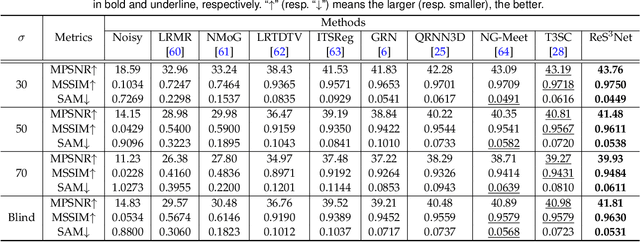
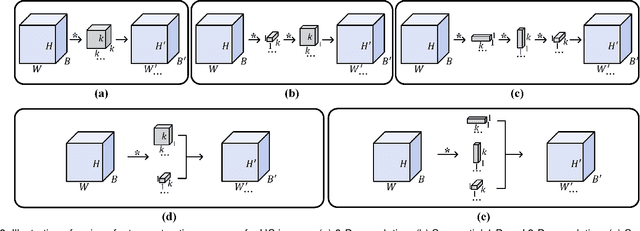
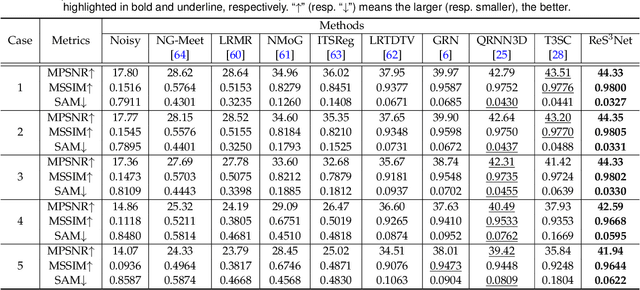
Abstract:In this paper, we study the problem of embedding the high-dimensional spatio-spectral information of hyperspectral (HS) images efficiently and effectively, oriented by feature diversity. To be specific, based on the theoretical formulation that feature diversity is correlated with the rank of the unfolded kernel matrix, we rectify 3D convolution by modifying its topology to boost the rank upper-bound, yielding a rank-enhanced spatial-spectral symmetrical convolution set (ReS$^3$-ConvSet), which is able to not only learn diverse and powerful feature representations but also save network parameters. In addition, we also propose a novel diversity-aware regularization (DA-Reg) term, which acts directly on the feature maps to maximize the independence among elements. To demonstrate the superiority of the proposed ReS$^3$-ConvSet and DA-Reg, we apply them to various HS image processing and analysis tasks, including denoising, spatial super-resolution, and classification. Extensive experiments demonstrate that the proposed approaches outperform state-of-the-art methods to a significant extent both quantitatively and qualitatively. The code is publicly available at \url{https://github.com/jinnh/ReSSS-ConvSet}.
Rank-Enhanced Low-Dimensional Convolution Set for Hyperspectral Image Denoising
Jul 09, 2022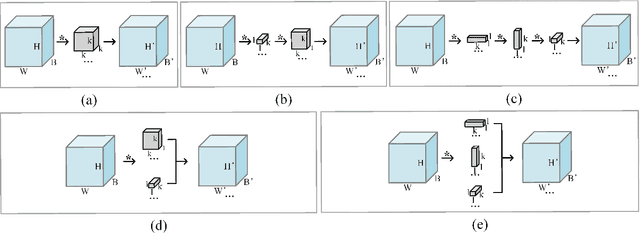
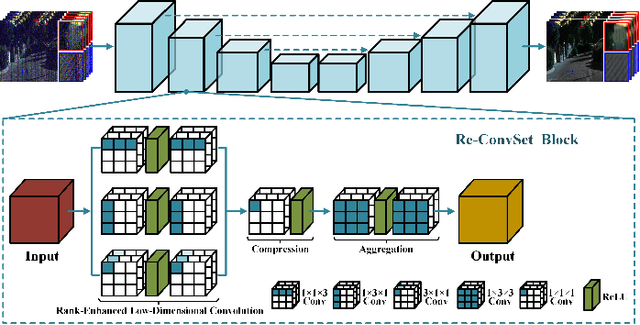
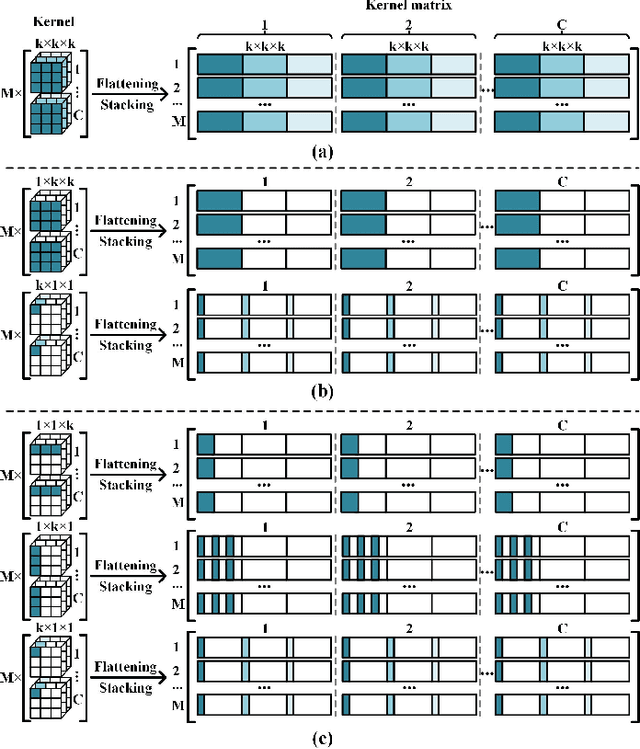
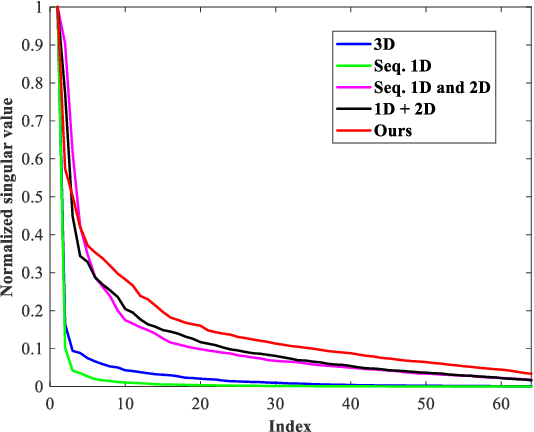
Abstract:This paper tackles the challenging problem of hyperspectral (HS) image denoising. Unlike existing deep learning-based methods usually adopting complicated network architectures or empirically stacking off-the-shelf modules to pursue performance improvement, we focus on the efficient and effective feature extraction manner for capturing the high-dimensional characteristics of HS images. To be specific, based on the theoretical analysis that increasing the rank of the matrix formed by the unfolded convolutional kernels can promote feature diversity, we propose rank-enhanced low-dimensional convolution set (Re-ConvSet), which separately performs 1-D convolution along the three dimensions of an HS image side-by-side, and then aggregates the resulting spatial-spectral embeddings via a learnable compression layer. Re-ConvSet not only learns the diverse spatial-spectral features of HS images, but also reduces the parameters and complexity of the network. We then incorporate Re-ConvSet into the widely-used U-Net architecture to construct an HS image denoising method. Surprisingly, we observe such a concise framework outperforms the most recent method to a large extent in terms of quantitative metrics, visual results, and efficiency. We believe our work may shed light on deep learning-based HS image processing and analysis.
Deep Posterior Distribution-based Embedding for Hyperspectral Image Super-resolution
May 30, 2022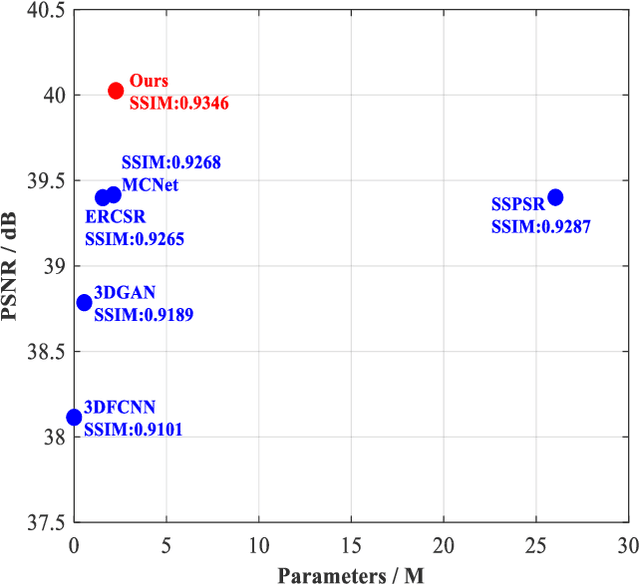
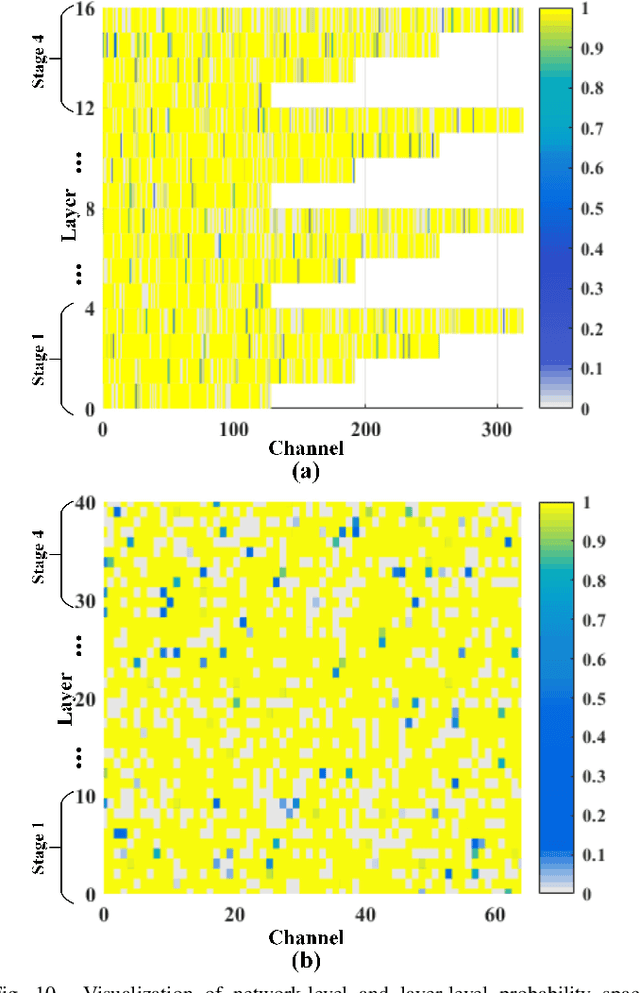
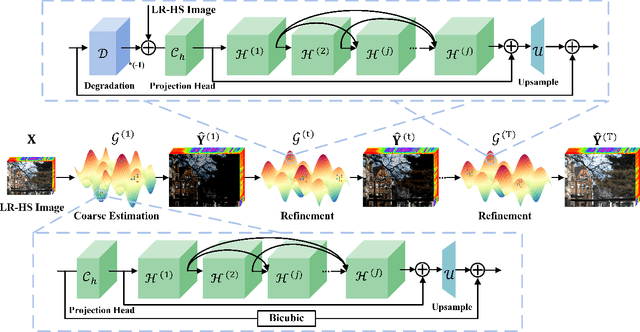
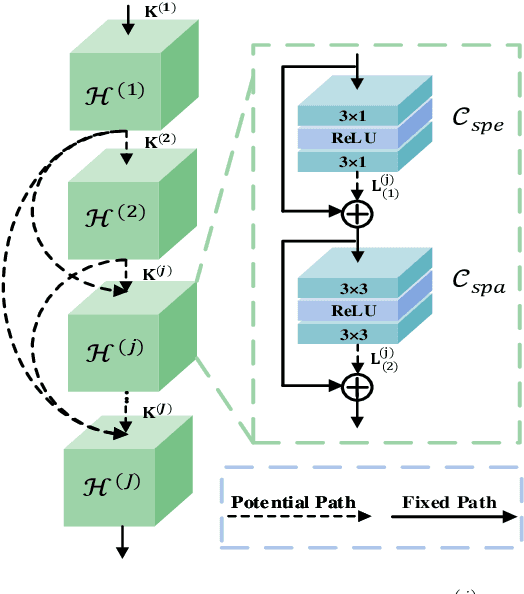
Abstract:In this paper, we investigate the problem of hyperspectral (HS) image spatial super-resolution via deep learning. Particularly, we focus on how to embed the high-dimensional spatial-spectral information of HS images efficiently and effectively. Specifically, in contrast to existing methods adopting empirically-designed network modules, we formulate HS embedding as an approximation of the posterior distribution of a set of carefully-defined HS embedding events, including layer-wise spatial-spectral feature extraction and network-level feature aggregation. Then, we incorporate the proposed feature embedding scheme into a source-consistent super-resolution framework that is physically-interpretable, producing lightweight PDE-Net, in which high-resolution (HR) HS images are iteratively refined from the residuals between input low-resolution (LR) HS images and pseudo-LR-HS images degenerated from reconstructed HR-HS images via probability-inspired HS embedding. Extensive experiments over three common benchmark datasets demonstrate that PDE-Net achieves superior performance over state-of-the-art methods. Besides, the probabilistic characteristic of this kind of networks can provide the epistemic uncertainty of the network outputs, which may bring additional benefits when used for other HS image-based applications. The code will be publicly available at https://github.com/jinnh/PDE-Net.
 Add to Chrome
Add to Chrome Add to Firefox
Add to Firefox Add to Edge
Add to Edge